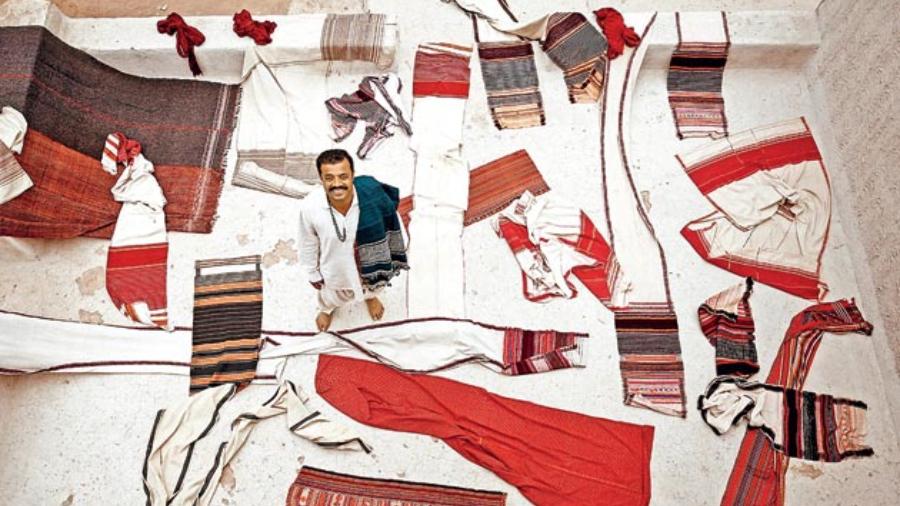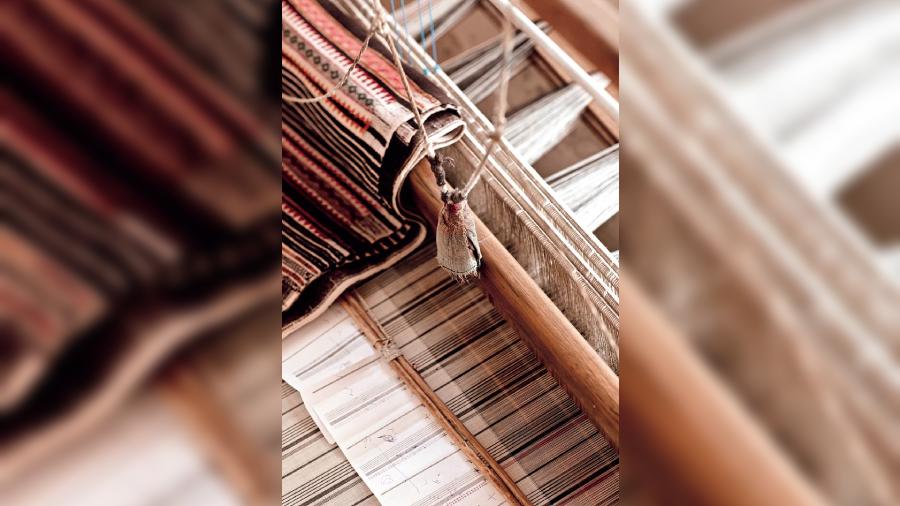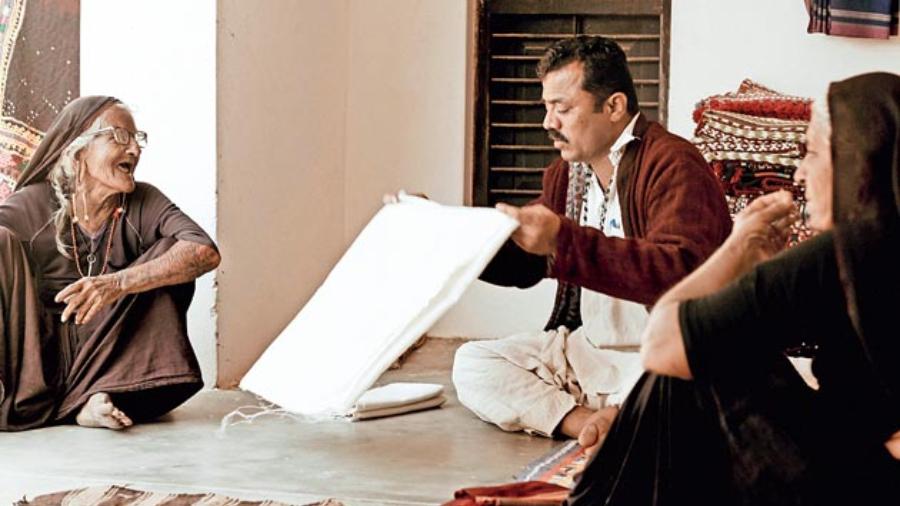The cultural significance of a turban in India is steeped in history and the many layers of the humble fabric, which is wrapped around the wearer’s head that turns it into not just an item of clothing but an item of pride. So when Injiri’s Chinar Farooqui and fashion photographer Gourab Ganguli united, they didn’t just fuse their NID-educated backgrounds in textile and film respectively but also their love for telling stories with an eye on the future. And in this case, they are looking at the idea of preserving a craft by educating viewers through their labour of love — The Turban Weavers of Bhujodi.

Chinar Farooqui and Gourab Ganguli
While the film was born out of Chinar’s idea (and objective) of viewing crafts of the subcontinent through the lenses of preservation and restoration and is an extension of the work that she has been doing over the years, it has now evolved into a piece of art that aptly premiered in front of a discerning crowd at Spanish craft festival, Xtant. In fact, Chinar’s apparel label Injiri has also been carefully curated over the years and she is seldom thirsty for attention within the fashion industry but has quietly carved a distinct niche for herself amongst textile and craft enthusiasts. The film was directed and shot by Gourab, who is known for his sense of aesthetics and approach that was the perfect fit for this film.

In any conversation with the photographer-film-maker, the word “vibe” comes up often and is something that is evident in his body of work (or even his Instagram profile). Therefore, when Gourab explained how he “approached Chinar to shoot her look-books”, it makes absolute sense that he was roped in for this ambitious-but-beautiful, craft-centric project immediately.

Early discussions about this story between Gourab and me started well before the film premiered at Xtant and the excitement was palpable in his voice. So when I finally caught up with him after he returned from Mallorca (the venue of the festival, where Gourab was also chosen for a workshop), I had to know what the reaction of an international audience was like. “There was an exhibition put out that was dedicated to Indian muslin as well. The experience was very intimate and emotional as there were people from all over the world who were there to appreciate various crafts and learn more about them. People were very moved as the film is quite revealing but it doesn’t say everything. Personally, I tried to be quiet and observe,” he said.

According to Gourab, the approach towards the film was simple. “We went in without a script as we wanted the craft to be at the centre. At the beginning, we did not even know if Shamji bhai (Shamji Vankar, the central figure that the documentary is woven around) would agree to it. We are celebrating this one man and his family who has held on to the craft for years through a series of strategic choices, simply by using their brains. It shows their mastery over the craft but also how they have taken steps to preserve it.” In fact, Gourab recounted, that Shamji’s trust was won by Chinar due to her respectful approach towards the craft over the years and because of Injiri’s no-wastage pattern-cutting techniques that aligned with those of his own practices. Discoveries during the making of the textile film such as the reasons behind the change of the width of the looms over time in Kutch and the material significance of the coarser cotton of the region, coupled with views of other stake-holders, helped add a holistic layer to the film.
While The Turban Weavers of Bhujodi is not available for viewing online, both Gourab and Chinar intend to screen the film in front of a select audience to help educate and tell the story of Shamji bhai and the centuries-old craft of Bhujodi that his family has guarded for generations.
Pictures: Courtesy of Gourab Ganguli and Chinar Farooqi
